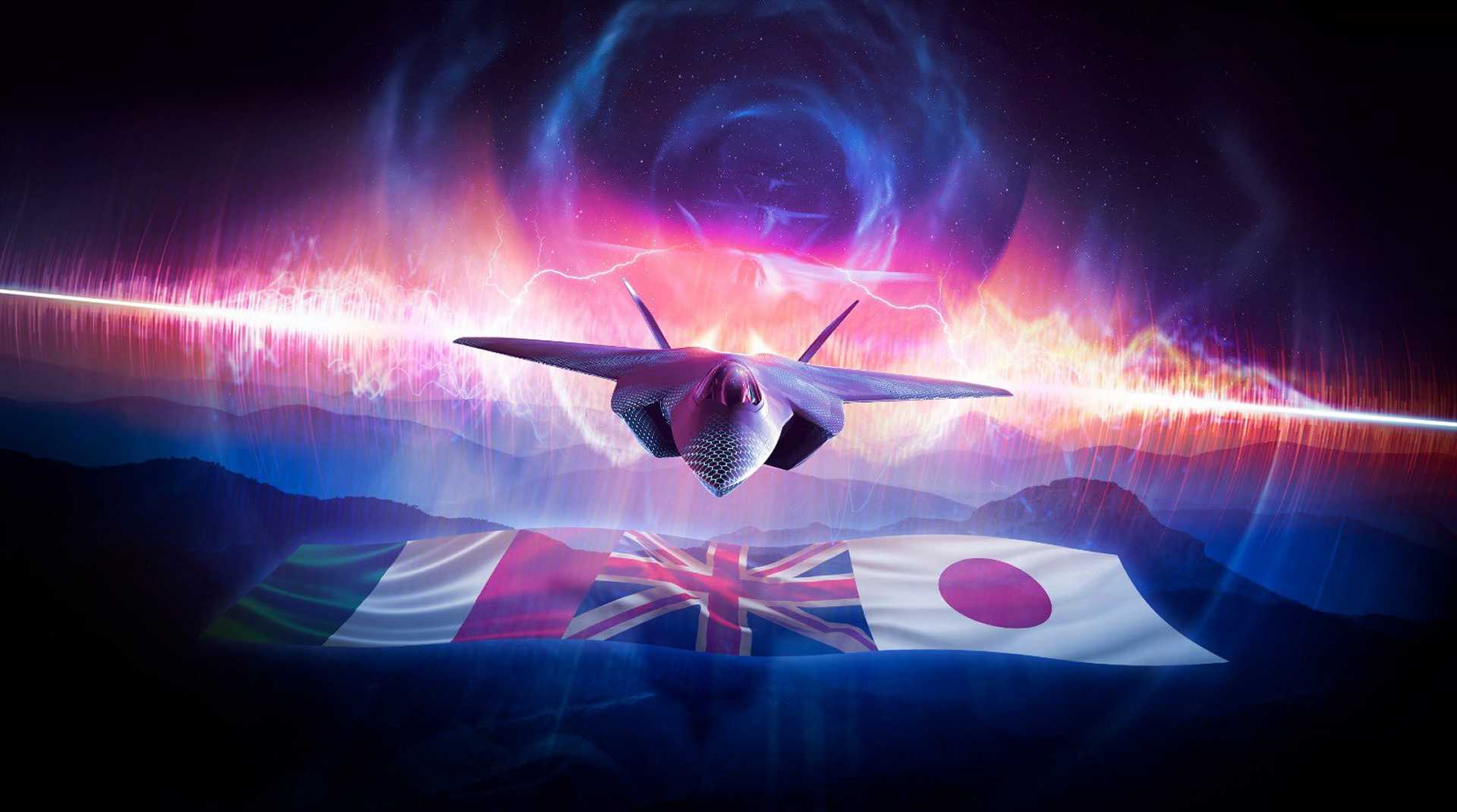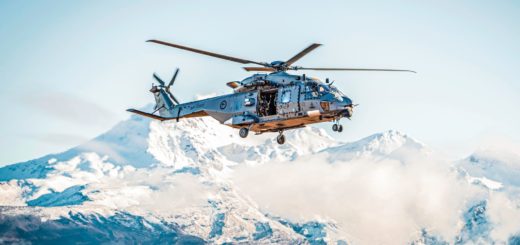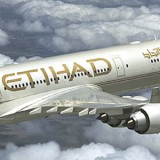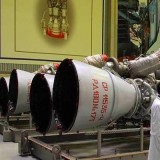Focus | Australia and Canada consider partnering in GCAP future fighter program as US policy changes weaken longtime alliances

{loadposition bannertop}
{loadposition sidebarpub}
As reported by Nicholas Drummond on April 2, 2025, Canada and Australia are showing renewed interest in joining the Global Combat Air Programme (GCAP), a trilateral initiative between the United Kingdom, Japan, and Italy to develop a sixth-generation multirole combat aircraft by 2035. Recent statements from defense officials and policymakers in both countries indicate that discussions, while still preliminary, are beginning to take shape. Recent actions and statements by U.S. President Donald Trump and Defense Secretary Pete Hegseth may also have contributed to a reassessment by Canada and Australia of their defense procurement strategies and the reliability of the United States as a defense partner, particularly regarding fighter jets. Follow Army Recognition on Google News at this link
The Global Combat Air Programme (GCAP) is a trilateral initiative between the United Kingdom, Japan, and Italy to develop a sixth-generation multirole combat aircraft intended to enter service by 2035. (Picture source: GCAP)
In Canada, the Trump administration’s decision in March 2025 to impose a 25% tariff on Canadian imports—citing national security risks and drug trafficking—has heightened trade tensions. This development, combined with public remarks by Trump referring to Canada as a “state” and suggesting annexation through economic means, has prompted concern among Canadian officials about national sovereignty and the broader trajectory of U.S.-Canada relations. In response, Prime Minister Mark Carney launched both a review of the country’s commitment to purchase 88 F-35 fighters, a deal valued at C$19 billion, and consultations with the European Union aimed at reducing reliance on U.S. military equipment and exploring potential alternatives such as the Gripen or Rafale. Defense Secretary Hegseth’s call for NATO members to increase defense spending—suggesting levels up to 5% of GDP—was interpreted in Ottawa as a signal that allies like Canada must assume greater responsibility for their own defense capabilities. Hegseth has also prioritized domestic security and the revitalization of the U.S. defense industrial base, including a focus on foreign military sales, which Canadian officials view as indicative of a more transactional defense relationship and a need to diversify procurement channels.
In Australia, the Trump administration’s imposition of a 25% tariff on steel and aluminum imports—reversing prior exemptions—introduced uncertainty into the U.S.-Australia trade relationship and raised concerns about the durability of long-standing economic agreements. In parallel, former Prime Minister Malcolm Turnbull convened a security policy forum in 2025 that questioned the reliability of the U.S.-Australia alliance and suggested that Australia reconsider its strategic alignment with the United States. Within this context, the Royal Australian Air Force began evaluating future air combat requirements, including potential alternatives to the F-35A and the exploration of next-generation air systems and uncrewed collaborative aircraft. Simultaneously, the AUKUS agreement remains a central element of Australia’s defense planning, with Canberra committing an initial $500 million to support the U.S. submarine industrial base as part of its acquisition of AUKUS nuclear-powered submarines. Secretary Hegseth has acknowledged Australia’s financial commitments and reaffirmed the U.S. strategic focus on the Indo-Pacific, though these developments have not fully resolved concerns in Australia about the consistency of U.S. policy. The cumulative effect of these developments has sparked growing interest in both countries in diversifying defense partnerships and reducing reliance on a single foreign supplier—even if that supplier is the United States.
The possibility of Canada’s participation in GCAP was raised by David Chadwick, a British Liberal Democrat MP for Brecon, Radnor and Cwm Tawe, in a written parliamentary inquiry dated 25 March 2025. Chadwick asked whether the UK Ministry of Defence had considered inviting Canada to join GCAP. On 1 April 2025, Defence Minister Maria Eagle responded that while Canada is not a formal participant, the United Kingdom, Japan, and Italy remain open to cooperation with additional countries, provided that such collaboration does not delay the program schedule and contributes to the development of future military capabilities. This signals a potential pathway for Canadian involvement, and analysts have noted that Canada may be a suitable candidate due to its membership in the Five Eyes intelligence alliance and strong defense ties with the UK. Additionally, Canada’s recent procurement of the F-35A aligns its fleet with those of the GCAP nations, all of which operate or plan to operate the same aircraft.
President Trump has stated that exports of the F-47 might be allowed in a “toned-down” version, similar to Russia’s export model strategy, but such options will likely be limited and tightly controlled. (Picture source: Wikimedia)
Australia’s engagement with GCAP has been more visible. During the 2025 Avalon Australian International Airshow held in Geelong, Air Vice-Marshal Nicholas Hogan, Head of Air Force Capability for the Royal Australian Air Force (RAAF), confirmed that representatives from the United Kingdom, Italy, and Japan provided an informational briefing on GCAP to Australian officials. Hogan described the session as exploratory, noting that Australia had requested further details. He emphasized that the briefing aimed to prepare the RAAF for potential future interoperability with GCAP aircraft, particularly in combined international operations. However, Hogan cautioned that the program remains in its early stages, that the Australian government has not received any formal participation options, and that it is too early to present specific proposals for government consideration. No acquisition decisions have yet been made.
Australia currently operates 72 F-35A Joint Strike Fighters, 24 F/A-18F Super Hornets, and 12 EA-18G Growlers. The 2024 Integrated Investment Program outlines plans to retain and upgrade the Super Hornet and Growler fleets through 2040, as the RAAF manages the gradual aging of its fighter inventory. Malcolm Davis of the Australian Strategic Policy Institute noted during a panel at Avalon that while new autonomous combat systems are advancing, crewed aircraft will remain central to Australia’s capability mix. Air Vice-Marshal John Haly, Head of Military Strategic Plans, emphasized that decisions regarding new acquisitions or partnerships in foreign development programs will ultimately rest with the government, with RAAF input.
The briefing occurred as global efforts to develop next-generation fighters are accelerating. The United States, Australia’s principal defense partner, recently announced that Boeing will manufacture the U.S. Air Force’s sixth-generation F-47 fighter. This announcement followed confirmation that two NGAD (Next Generation Air Dominance) prototypes have been flying since 2019. The U.S. Navy is also expected to select the manufacturer for its F/A-XX fighter soon. President Trump has stated that exports of the F-47 might be allowed in a “toned-down” version, similar to Russia’s export model strategy, but such options will likely be limited and tightly controlled. In the Indo-Pacific, South Korea continues development of the KF-21 Boramae, to be offered in both single- and twin-seat configurations. China’s aeronautics industry is also intensifying its efforts, fielding multiple advanced aircraft including the Chengdu J-20, the J-20S, the Shenyang J-35 (with a planned carrier-based version), and two potential sixth-generation fighters—the Chengdu J-36 and the Shenyang J-50. Additionally, China is upgrading legacy platforms such as the J-10C, J-10CE, and J-16, as well as producing new J-15 variants like the J-15T and J-15D.
China’s aeronautics industry is also intensifying its efforts, fielding multiple advanced aircraft including the Chengdu J-36, one its two potential sixth-generation fighters. (Picture source: Wikimedia)
Russia is progressing with the Sukhoi Su-75 Checkmate, a single-engine stealth fighter positioned as a more affordable alternative to the Su-57 Felon, with export ambitions targeting India, Algeria, and other markets. Meanwhile, Türkiye’s KAAN fighter jet program—described as a fifth-generation aircraft with some sixth-generation features—has drawn international interest, especially from Gulf countries such as the UAE and Saudi Arabia. The Turkish Air Force plans to acquire over 100 KAAN jets to eventually replace its F-16 fleet. Additionally, Saab is advancing preparations for Sweden’s next-generation fighter jet as the JAS 39 Gripen nears the end of its operational service life, with the deployment of a replacement envisioned around 2050. Saab’s proposal focuses on a mix of manned and unmanned platforms, including a low-cost subsonic uncrewed platform under one ton, a supersonic uncrewed platform over five tons, a subsonic uncrewed platform under five tons, and a new manned fighter. These will incorporate technologies such as artificial intelligence, networked operations, and stealth capabilities, which are considered necessary for future air combat requirements.
The Global Combat Air Programme (GCAP) is a multinational effort launched in December 2022 by the UK, Italy, and Japan to develop a sixth-generation stealth fighter by 2035. It merges the UK-led BAE Systems Tempest project (in partnership with Italy) and Japan’s Mitsubishi F-X program. The formal treaty was signed in December 2023 in Tokyo, leading to the creation of the GCAP International Government Organisation (GIGO), headquartered in the UK. This intergovernmental body coordinates industrial and defense cooperation among the three nations. Each country contributes key industrial players: BAE Systems, Rolls-Royce, Leonardo, and MBDA from the UK and Italy; and Mitsubishi Heavy Industries, IHI Corporation, and Mitsubishi Electric from Japan. A new joint venture is currently being formed to manage design, development, and delivery of the aircraft. Over 9,000 personnel and 1,000 suppliers are already involved across the three countries.
GCAP aims to produce a sixth-generation multirole stealth fighter emphasizing extended range, internal payload, low observability, and sensor fusion. The platform will integrate advanced technologies such as artificial intelligence, manned-unmanned teaming, software-defined architecture, and internal weapons bays. The delta-wing design with a 50-degree sweep and an estimated 16.5-meter wingspan is reportedly about one-third larger than the Eurofighter Typhoon. The aircraft is expected to have a greater combat radius than current fighters using internal fuel alone, meeting long-range operational needs, particularly in the Indo-Pacific. A flight demonstrator is scheduled for 2027. Leonardo has projected that around 350 units will be ordered by 2035. The GCAP will replace the Eurofighter Typhoon in UK and Italian service and the Mitsubishi F-2 in Japan, with additional export prospects subject to Japan’s revised export policies introduced in 2024.

{loadposition bannertop}
{loadposition sidebarpub}
As reported by Nicholas Drummond on April 2, 2025, Canada and Australia are showing renewed interest in joining the Global Combat Air Programme (GCAP), a trilateral initiative between the United Kingdom, Japan, and Italy to develop a sixth-generation multirole combat aircraft by 2035. Recent statements from defense officials and policymakers in both countries indicate that discussions, while still preliminary, are beginning to take shape. Recent actions and statements by U.S. President Donald Trump and Defense Secretary Pete Hegseth may also have contributed to a reassessment by Canada and Australia of their defense procurement strategies and the reliability of the United States as a defense partner, particularly regarding fighter jets.
Follow Army Recognition on Google News at this link
The Global Combat Air Programme (GCAP) is a trilateral initiative between the United Kingdom, Japan, and Italy to develop a sixth-generation multirole combat aircraft intended to enter service by 2035. (Picture source: GCAP)
In Canada, the Trump administration’s decision in March 2025 to impose a 25% tariff on Canadian imports—citing national security risks and drug trafficking—has heightened trade tensions. This development, combined with public remarks by Trump referring to Canada as a “state” and suggesting annexation through economic means, has prompted concern among Canadian officials about national sovereignty and the broader trajectory of U.S.-Canada relations. In response, Prime Minister Mark Carney launched both a review of the country’s commitment to purchase 88 F-35 fighters, a deal valued at C$19 billion, and consultations with the European Union aimed at reducing reliance on U.S. military equipment and exploring potential alternatives such as the Gripen or Rafale. Defense Secretary Hegseth’s call for NATO members to increase defense spending—suggesting levels up to 5% of GDP—was interpreted in Ottawa as a signal that allies like Canada must assume greater responsibility for their own defense capabilities. Hegseth has also prioritized domestic security and the revitalization of the U.S. defense industrial base, including a focus on foreign military sales, which Canadian officials view as indicative of a more transactional defense relationship and a need to diversify procurement channels.
In Australia, the Trump administration’s imposition of a 25% tariff on steel and aluminum imports—reversing prior exemptions—introduced uncertainty into the U.S.-Australia trade relationship and raised concerns about the durability of long-standing economic agreements. In parallel, former Prime Minister Malcolm Turnbull convened a security policy forum in 2025 that questioned the reliability of the U.S.-Australia alliance and suggested that Australia reconsider its strategic alignment with the United States. Within this context, the Royal Australian Air Force began evaluating future air combat requirements, including potential alternatives to the F-35A and the exploration of next-generation air systems and uncrewed collaborative aircraft. Simultaneously, the AUKUS agreement remains a central element of Australia’s defense planning, with Canberra committing an initial $500 million to support the U.S. submarine industrial base as part of its acquisition of AUKUS nuclear-powered submarines. Secretary Hegseth has acknowledged Australia’s financial commitments and reaffirmed the U.S. strategic focus on the Indo-Pacific, though these developments have not fully resolved concerns in Australia about the consistency of U.S. policy. The cumulative effect of these developments has sparked growing interest in both countries in diversifying defense partnerships and reducing reliance on a single foreign supplier—even if that supplier is the United States.
The possibility of Canada’s participation in GCAP was raised by David Chadwick, a British Liberal Democrat MP for Brecon, Radnor and Cwm Tawe, in a written parliamentary inquiry dated 25 March 2025. Chadwick asked whether the UK Ministry of Defence had considered inviting Canada to join GCAP. On 1 April 2025, Defence Minister Maria Eagle responded that while Canada is not a formal participant, the United Kingdom, Japan, and Italy remain open to cooperation with additional countries, provided that such collaboration does not delay the program schedule and contributes to the development of future military capabilities. This signals a potential pathway for Canadian involvement, and analysts have noted that Canada may be a suitable candidate due to its membership in the Five Eyes intelligence alliance and strong defense ties with the UK. Additionally, Canada’s recent procurement of the F-35A aligns its fleet with those of the GCAP nations, all of which operate or plan to operate the same aircraft.

President Trump has stated that exports of the F-47 might be allowed in a “toned-down” version, similar to Russia’s export model strategy, but such options will likely be limited and tightly controlled. (Picture source: Wikimedia)
Australia’s engagement with GCAP has been more visible. During the 2025 Avalon Australian International Airshow held in Geelong, Air Vice-Marshal Nicholas Hogan, Head of Air Force Capability for the Royal Australian Air Force (RAAF), confirmed that representatives from the United Kingdom, Italy, and Japan provided an informational briefing on GCAP to Australian officials. Hogan described the session as exploratory, noting that Australia had requested further details. He emphasized that the briefing aimed to prepare the RAAF for potential future interoperability with GCAP aircraft, particularly in combined international operations. However, Hogan cautioned that the program remains in its early stages, that the Australian government has not received any formal participation options, and that it is too early to present specific proposals for government consideration. No acquisition decisions have yet been made.
Australia currently operates 72 F-35A Joint Strike Fighters, 24 F/A-18F Super Hornets, and 12 EA-18G Growlers. The 2024 Integrated Investment Program outlines plans to retain and upgrade the Super Hornet and Growler fleets through 2040, as the RAAF manages the gradual aging of its fighter inventory. Malcolm Davis of the Australian Strategic Policy Institute noted during a panel at Avalon that while new autonomous combat systems are advancing, crewed aircraft will remain central to Australia’s capability mix. Air Vice-Marshal John Haly, Head of Military Strategic Plans, emphasized that decisions regarding new acquisitions or partnerships in foreign development programs will ultimately rest with the government, with RAAF input.
The briefing occurred as global efforts to develop next-generation fighters are accelerating. The United States, Australia’s principal defense partner, recently announced that Boeing will manufacture the U.S. Air Force’s sixth-generation F-47 fighter. This announcement followed confirmation that two NGAD (Next Generation Air Dominance) prototypes have been flying since 2019. The U.S. Navy is also expected to select the manufacturer for its F/A-XX fighter soon. President Trump has stated that exports of the F-47 might be allowed in a “toned-down” version, similar to Russia’s export model strategy, but such options will likely be limited and tightly controlled. In the Indo-Pacific, South Korea continues development of the KF-21 Boramae, to be offered in both single- and twin-seat configurations. China’s aeronautics industry is also intensifying its efforts, fielding multiple advanced aircraft including the Chengdu J-20, the J-20S, the Shenyang J-35 (with a planned carrier-based version), and two potential sixth-generation fighters—the Chengdu J-36 and the Shenyang J-50. Additionally, China is upgrading legacy platforms such as the J-10C, J-10CE, and J-16, as well as producing new J-15 variants like the J-15T and J-15D.

China’s aeronautics industry is also intensifying its efforts, fielding multiple advanced aircraft including the Chengdu J-36, one its two potential sixth-generation fighters. (Picture source: Wikimedia)
Russia is progressing with the Sukhoi Su-75 Checkmate, a single-engine stealth fighter positioned as a more affordable alternative to the Su-57 Felon, with export ambitions targeting India, Algeria, and other markets. Meanwhile, Türkiye’s KAAN fighter jet program—described as a fifth-generation aircraft with some sixth-generation features—has drawn international interest, especially from Gulf countries such as the UAE and Saudi Arabia. The Turkish Air Force plans to acquire over 100 KAAN jets to eventually replace its F-16 fleet. Additionally, Saab is advancing preparations for Sweden’s next-generation fighter jet as the JAS 39 Gripen nears the end of its operational service life, with the deployment of a replacement envisioned around 2050. Saab’s proposal focuses on a mix of manned and unmanned platforms, including a low-cost subsonic uncrewed platform under one ton, a supersonic uncrewed platform over five tons, a subsonic uncrewed platform under five tons, and a new manned fighter. These will incorporate technologies such as artificial intelligence, networked operations, and stealth capabilities, which are considered necessary for future air combat requirements.
The Global Combat Air Programme (GCAP) is a multinational effort launched in December 2022 by the UK, Italy, and Japan to develop a sixth-generation stealth fighter by 2035. It merges the UK-led BAE Systems Tempest project (in partnership with Italy) and Japan’s Mitsubishi F-X program. The formal treaty was signed in December 2023 in Tokyo, leading to the creation of the GCAP International Government Organisation (GIGO), headquartered in the UK. This intergovernmental body coordinates industrial and defense cooperation among the three nations. Each country contributes key industrial players: BAE Systems, Rolls-Royce, Leonardo, and MBDA from the UK and Italy; and Mitsubishi Heavy Industries, IHI Corporation, and Mitsubishi Electric from Japan. A new joint venture is currently being formed to manage design, development, and delivery of the aircraft. Over 9,000 personnel and 1,000 suppliers are already involved across the three countries.
GCAP aims to produce a sixth-generation multirole stealth fighter emphasizing extended range, internal payload, low observability, and sensor fusion. The platform will integrate advanced technologies such as artificial intelligence, manned-unmanned teaming, software-defined architecture, and internal weapons bays. The delta-wing design with a 50-degree sweep and an estimated 16.5-meter wingspan is reportedly about one-third larger than the Eurofighter Typhoon. The aircraft is expected to have a greater combat radius than current fighters using internal fuel alone, meeting long-range operational needs, particularly in the Indo-Pacific. A flight demonstrator is scheduled for 2027. Leonardo has projected that around 350 units will be ordered by 2035. The GCAP will replace the Eurofighter Typhoon in UK and Italian service and the Mitsubishi F-2 in Japan, with additional export prospects subject to Japan’s revised export policies introduced in 2024.






